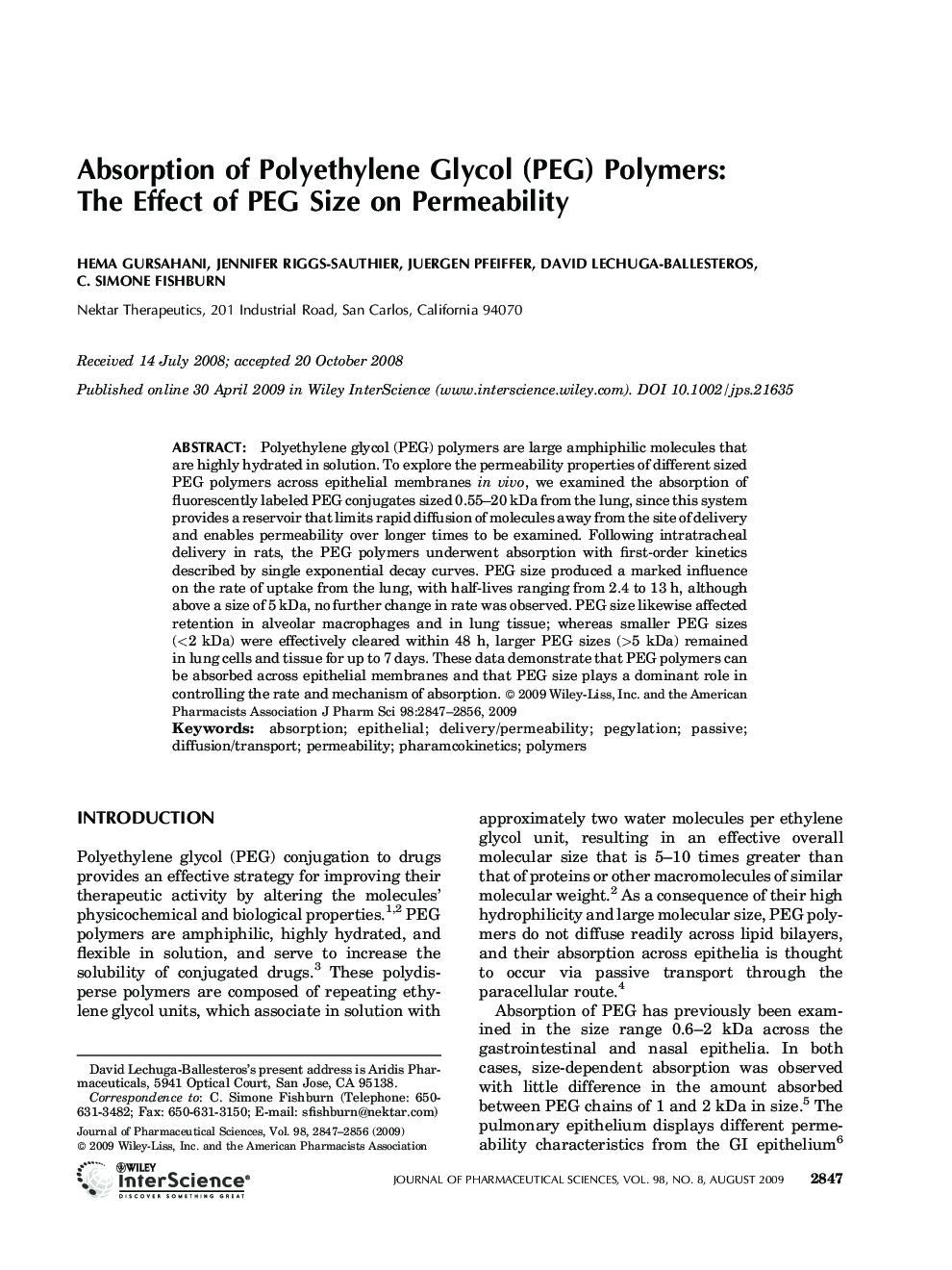| Article ID | Journal | Published Year | Pages | File Type |
|---|---|---|---|---|
| 2487002 | Journal of Pharmaceutical Sciences | 2009 | 10 Pages |
Abstract
Polyethylene glycol (PEG) polymers are large amphiphilic molecules that are highly hydrated in solution. To explore the permeability properties of different sized PEG polymers across epithelial membranes in vivo, we examined the absorption of fluorescently labeled PEG conjugates sized 0.55-20Â kDa from the lung, since this system provides a reservoir that limits rapid diffusion of molecules away from the site of delivery and enables permeability over longer times to be examined. Following intratracheal delivery in rats, the PEG polymers underwent absorption with first-order kinetics described by single exponential decay curves. PEG size produced a marked influence on the rate of uptake from the lung, with half-lives ranging from 2.4 to 13Â h, although above a size of 5Â kDa, no further change in rate was observed. PEG size likewise affected retention in alveolar macrophages and in lung tissue; whereas smaller PEG sizes (<Â 2Â kDa) were effectively cleared within 48Â h, larger PEG sizes (>Â 5Â kDa) remained in lung cells and tissue for up to 7 days. These data demonstrate that PEG polymers can be absorbed across epithelial membranes and that PEG size plays a dominant role in controlling the rate and mechanism of absorption.
Related Topics
Health Sciences
Pharmacology, Toxicology and Pharmaceutical Science
Drug Discovery
Authors
Hema Gursahani, Jennifer Riggs-Sauthier, Juergen Pfeiffer, David Lechuga-Ballesteros, C. Simone Fishburn,
